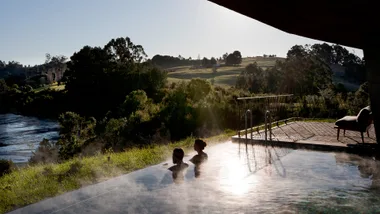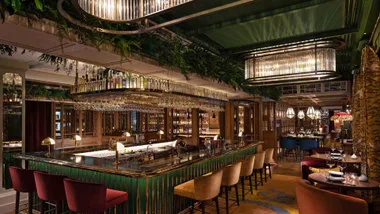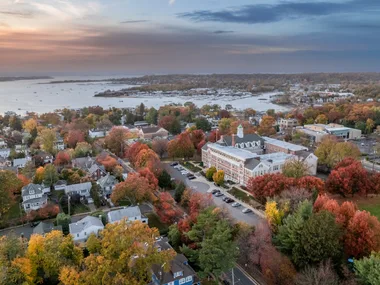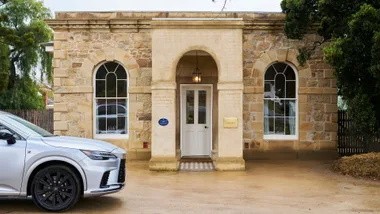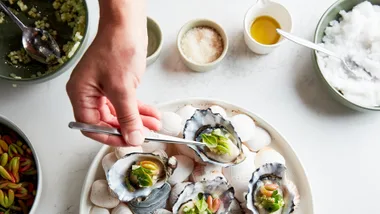THE FINE PRINT
**GETTING THERE
**Cathay Pacific operates multiple flights daily from Australia to Milan via Hong Kong.
The high-speed train from Milan to Turin takes about an hour.
**STAY
**Albergo Cantine Ascheri Hotel on the Ascheri family wine estate also has a rustic restaurant, Osteria Murivecchi. Doubles from $160. Via Piumati 25, Bra, +39 0172 430312.
Grand Hotel Sitea is set in the historic heart of the city. It’s one of the best places to savour Turin’s old-world elegance in a friendly comfortable setting. Doubles from $305. Via Carlo Alberto 35, +39 011 5170171.
Doubles from $220. Via Bava Beccaris 1, Monforte d’Alba, +39 0173 78158.
The NH Lingotto Tech Hotel in the former Fiat factory nods to the city’s industrial past while basking in its new focus on modern art and design. Doubles from $185. Via Nizza 230, +39 011 6642000.
**
EAT & DRINK
Galleria Subalpina, Piazza Castello 27, Turin, +39 011 4407138.
Piazza della Consolata 5, Turin, +39 011 4369325.
Piazza San Carlo 156, Turin, +39 011 532586.
Cook and the City
Piazza Emanuele Filiberto 3, Turin
Via Vallada 18, Monforte d’Alba, +39 0173 78225.
Via Nizza 230, Turin, +39 011 1950 6801.
Via Alba 15, Serralunga d’Alba, +39 0173 626111.
[Platti
](http://platti.it) Corso Vittorio Emanuele II 72, Turin, +39 011 5069056.
Trattoria Della Posta, an elegant restaurant just outside Monforte d’Alba, has been in the same family for four generations. Specialties include bagna càuda served with artichokes, fennel and cardoons for dipping. Località Sant’Anna, Monforte d’Alba, +39 0173 78120.
**
VISIT
Strada della Basilica di Superga 75, Turin.
Castello di Rivoli Museum of Contemporary Art
Piazza Mafalda di Savoia, Turin, +39 011 9565222.
Mole Antonelliana, Via Montebello 20, Turin, +39 011 8138560.
Piazza Castello, Turin, +39 011 4433501.
Pinoteca Giovanni e Marella Agnelli houses the personal art collection of Fiat’s Giovanni Agnelli as well as temporary exhibitions. Via Nizza 230, Turin, +39 011 0062713.
It was the lure of Piedmont’s legendary cooking and lush countryside that drew us to this bucolic pocket of north-west Italy. We came for the famous truffles and wild mushrooms, the decadent pasta and the artisanal cheeses. Of course we planned to accompany everything with the finest local wines – from the powerful Barolo to the elegant Barbaresco and the delicate, sparkling Asti. As we mapped out our tour through the birthplace of the Slow Food movement, where respect for local ingredients and the enjoyment of a leisurely pace are mandatory, we prepared ourselves for gastronomic bliss. We were so blinkered by visions of country restaurants nestled in the vineyards, hill-top villages with views of the snow-capped mountains, and isolated palazzi converted into rustic agriturismos, that we hardly gave a thought to our stay in Piedmont’s capital. Turin, we rationalised, was little more than a necessary pause on the way to our rural idyll.
But from the moment we stepped off the sparkling new metro in the grand Porta Nuova station, the charms of this bustling city on the majestic River Po unfolded in a series of particularly pleasant surprises. We were expecting a dour industrial capital, so the first shock was the number of sweeping boulevards lined with grand buildings more reminiscent of Paris than a city famous for its Fiat factories. The snowy peaks of the distant Alps only added to Turin’s stately beauty.
Our second eye-opener was finding the gracious avenues and parks awash with a dashing and particularly unwarlike breed of soldier, all sporting a jaunty feather in their cap and many looking as if their serving days were long gone. We had stumbled on the tail end of the Alpini mountain soldiers’ celebration of 150 years of Italian unity, giving us a crash course in Turin’s place in Italian history and the chance to see the city in full swing.
Turin, the Alpini veterans proudly informed us, was famous for much more than cars. It was both the historic home of the Italian royal family, the House of Savoy, and the birthplace of Italy as we know it. When Victor Emmanuel II was declared the king of a united Italy in 1861, Turin became the first national capital (our proud hosts didn’t mention it was only a few years before the capital moved to Florence). It first gained its royal standing in the 16th century when the House of Savoy reclaimed it from the French, and as we explored the piazze and avenues, we found that much of the city centre’s stately charm dated from these heady days.
Unlike Rome, with its chaotic jumble of architectural treasures, Turin’s heart has a harmonious baroque feel. The Savoys employed a succession of brilliant architects to herald their illustrious new position, and their lavish creations set the tone for the city. Filippo Juvarra was one of the most influential. His elaborate Basilica di Superga, on a hill top outside the city, is one of the landmarks of Turin and a glorious place to visit, while his Palazzo Madama, now a museum of ancient art in the elegant Piazza Castello, exemplifies the city’s unified style. While the palace incorporates an ancient Roman city gate and a medieval compound, Juvarra’s elaborate façade lends an opulent air to the complex and perfectly complements Guarino Guarini’s church of San Lorenzo across the square.
Off to one side of this regal square lies Porta Palatina, the ancient city gate near the vast open-air food market of Porta Palazzo. The market is a chaotic, exciting place with a huge multicultural mix and a dazzling display of the fresh produce for which Piedmont is famed.
Meanwhile, on the other side of Piazza Castello, a very different world unfolds. It’s from here that the elegant porticoes and arcades, among Turin’s most enchanting features, extend towards the city’s other grand squares: Piazza San Carlo with its beautiful symmetrical churches, and the vast river-front Piazza Vittorio Veneto.
The elaborate glass ceilings of arcades such as the Galleria Subalpina and the Galleria San Federico give the lavish cafés and boutiques beneath them an almost clandestine air, out of sight of the industrious Turinese outside. In addition to these arcades, Turin has about 18 kilometres of porticoes, built partly so the House of Savoy royal family could take their daily stroll without risking rain. Today, among the exclusive boutiques on Via Roma, locals come to shop, to take their nightly passeggiata, and to follow the age-old customs still so central to day-to-day life here in Piedmont. As we wander under the walkways, old-world Turin comes to life.
Its glorious gilded cafés have a special place in city history: they were haunts of not only the rich and idle, but also the politicians plotting the Italian unification, or Il Risorgimento. Locals say that when King Victor Emmanuel II wanted the latest political scoop, he would ask, “What news from the cafés today?”
The drinks, it seems, were taken as seriously as the conversation. The most famous is the Bicerin, a delicate layering of the finest espresso, bitter hot chocolate and thick steamed milk that is sipped and never stirred. Caffè Al Bicerin opened in 1763 and still serves its namesake drink at its handful of elegant marble-topped tables. Just as renowned is the 19th-century Baratti & Milano within the exquisite surrounds of the Galleria Subalpina, with its lavish window displays of gaily wrapped chocolates and heavy, ornate doors that open into what seems to be another age. Chandeliers glitter over the gilded bar while immaculate signoras tuck into local pastries, delicate sandwiches and giandujotto – the hazelnut chocolates for which Turin is famous.
The Turinese claim the ritual of the apéritivo was born here in 1786, when Benedetto Carpano created vermouth by flavouring white wine with various herbs and spices. Every evening from about six o’clock, locals head to the cafés where the price of a cocktail gives access to a surprisingly lavish buffet of local produce. Our first night, with the Alpini reigning over Turin, was spent wandering between grand traditional bars such as the Belle Époque Platti, where the bar itself was completely covered with platters of canapés, and the sumptuous Caffè San Carlo. The next night, when the crowds had thinned, we headed to the Roman Quarter, or Quadrilatero Romano, between the Porta Palazzo and Via Garibaldi. It was once a place best avoided after dark, but has been dramatically overhauled in recent years. The historic alleys and medieval houses are home to eclectic boutiques and apéritivo bars such as Cook and the City, which turns into a dance club as the night goes on, showing off a decidedly funkier side of Turin.
The successful reinvention of the Roman Quarter highlights the city’s proficiency in the art of transformation. After some 300 years hosting the House of Savoy, Turin’s first major overhaul came at the end of World War II, when it reinvented itself as an industrial capital. It is this era, when Fiat was at the height of its success, that springs to mind for most people when they think of Turin. Few realise that the motor industry was just a small part of the industrial development that took place in the area. The Mole Antonelliana, a soaring monument that sits in stark contrast to the city’s neat grid, is now home to the wonderful National Cinema Museum, paying homage to the fact that Turin was also the birthplace of the Italian film industry.
When Fiat ran into trouble in the 1990s, a radical new master plan transformed the city into a cosmopolitan centre of modern design, contemporary art and artisanal food, with an emphasis on tourism. The Castello di Rivoli Museum, which opened in 1984 in one of the city’s signature baroque masterpieces, is Italy’s most important contemporary art museum, and Turin now has a highly regarded art fair, Artissima, as well as several new galleries that support local artists.
The Fiat company is also an integral part of the city’s latest incarnation. Its famous modernist plant, Lingotto, built in the 1920s by Giacomo Mattè-Trucco, was refashioned by architect Renzo Piano as a post-industrial public space with conference centres, shops and a “floating” roof-top art gallery loaded with the lavish collection of Fiat magnate Giovanni Agnelli. The test race track on the roof was retained, and guests in the complex’s hotel now use it as a jogging loop.
Just across from the Lingotto complex, Eataly brings the extraordinary benefits of the Slow Food movement, which unfolded in the surrounding countryside, to the city. On our final morning in Turin, we pondered the tough decision of which of Eataly’s eight restaurants to try, before perching on the bar stools at the “i salumi e i formaggi” counter. The highlight of the meal was a selection of local cheeses including the fresh sheep’s and goat’s milk cheese Robiola di Roccaverano from near Asti, and Castelmagno, named for the village where it is produced from the milk of the Piedmontese breed of cattle. These earthy tastes were the perfect transition from the city to the countryside.
After Turin so resolutely exceeded our expectations, we wondered if rural Piedmont would live up to the hype. We needn’t have worried. Glorious spring weather showcased the vineyards and lush forests of ancient oaks and poplars in all their glory, while the surrounding alps ensured every scene, from hazelnuts groves and wildflowers to quaint villages, had a fittingly dramatic backdrop.
We based ourselves in the elegant village of Monforte d’Alba at the 18th-century Villa Beccaris, a stately manor house in a centuries-old park of oak trees. The glass-walled dining room captured the region’s typically spectacular sweeping valley views. And the nearby restaurants, including Da Felicin with its vast wine cellar, gave a perfect introduction to the regional specialties. Our first meal at Da Felicin started with chickpea farinata, a thin crêpe from neighbouring Liguria, with salted cod, followed by local asparagus with homemade mayonnaise, rye pancakes with fresh cheese, pork and onions, fine local tajarin pasta (according to our waiter, the pasta “gets thicker as you go south, like the people”), and the famous Barolo-braised beef. Local wines accompanied each course, starting with a fresh Langhe chardonnay and working up to a rich Barolo.
As we travelled through towns such as Alba, famous for its medieval watchtowers and its annual truffle festival, and Neive with its cobbled lanes, I was reminded that Piedmont has been called “Tuscany without the tourists”. While there are parallels between the two regions, Piedmont’s green fields and pastures are definitely more lush. It also retains a more authentic, and somehow more accessible, atmosphere. And it was here, rather than in Turin, that we found the industry for which the northern Italians are renowned. Life might revolve around wine and food, but the work involved in ensuring these mainstays of local pride are of the absolute highest quality is taken extremely seriously.
Locals seem to view the region’s emergence as a destination for discerning food and wine tourists as both a recognition of their local prowess and a way of allowing them to maintain their enviable lifestyle. The standard of both ingredients and cooking was consistently high everywhere we went, from upmarket Slow Food restaurants in Alba to casual village cafés and sleek wine bars such as that at the Fontanafredda wine estate. And as we toured wineries and visited the regional enotecas set in glorious historic buildings – an elaborate chapel in Barbaresco, a 10th-century castle in Barolo, the medieval castle of Grinzane Cavour – it became apparent how essential wine has been to the area throughout history and how important it remains today.
Cristina Ascheri, matriarch of the Ascheri wine estate, hotel and restaurant, summed up the local respect for the wines while she talked us through a tasting. “Barolo has given us a lot, and in each glass is an experience of a lifetime,” she said. “Making these wines is like having a baby: you grow them and pick them and then look after them for years. When it goes onto the market it mirrors the land it comes from and the hand of the winemaker.”
“When someone from here gets ready to drink a Barolo, they have to be ready to drink a Barolo,” Ascheri said. “It’s not something to take lightly.”
 FERGUS STOTHART
FERGUS STOTHART

